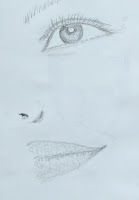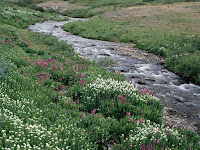
Today’s Image
Zia No. 2
Acrylic on Canvas
Today’s a Monday, which seems like a good day of the week for today’s blog, which is about rejection. I’m not talking about all the kinds of rejection there are in life, such as not getting hired or losing a job or the break-up of a relationship, all of which can be unpleasant experiences. Today’s Image is a painting of mine that was rejected recently from a local contemporary art show.
I’m talking about the rejection that artists regularly endure and that comes about after their artwork has been turned down or not deemed good enough for a show or exhibit at a gallery or similar venue. Artists being artists, this can be a bitter pill to swallow.
Why is this so? Well, the general consensus is that artists are known for being right-brained with traits such as being intuitive, good with images and color, spatial perception, feelings and emotions, and seeing the whole, etc. For some reason, people often say things like, “he/she in one of his/her moods, you know, he’s/ she’s an artist.” Like we should be immune or something.
I don’t like stereotypes, and I think it’s natural to feel down after a rejection occurs no matter what label, including “artist,” you put on people. The key is how down you let yourself feel on a scale from deeply depressed to slightly miffed or somewhere in between.
What most people don’t realize (or even think about) is that the vocation of an artist is probably more prone to rejection than just about any other career with the possible exception of acting. This is because creating art results in artwork, which is visual, and whose only reason for existence is to be viewed. Of course, if you’re an artist who has never, ever shown your art to anyone, and you never plan to, then you have not experienced the kind of rejection we’re talking about.
I once read a biography of the mid-20th century actor, Rosalind Russell, who described acting as, “standing up naked and turning around very slowly.” What she meant is that as an actor, you put yourself “out there” for everyone to see and comment on. I make the case that this goes for artists, too.
There’s vulnerability in what artists do, and it hurts when you/your work is rejected. As the current saying goes, what doesn’t kill you makes you stronger. That’s a little too glib for me, and –ouch—it still hurts.
At those times, I like to remember Henri Matisse’s quote, “creativity takes courage.”
It most assuredly does. When my own art is rejected, I like to think positive thoughts, such as your art will never be acknowledged (or shown) if you never enter it in a juried exhibit or the more simplistic, nothing-ventured-nothing-gained.
I like to think most jurors of art are experienced and open minded, well intentioned, with nothing but the highest scruples and best interests of all the artists at heart.
But, darn it, they’re only human, so I know there must have been some mistake...
Cheers!
Today’s a Monday, which seems like a good day of the week for today’s blog, which is about rejection. I’m not talking about all the kinds of rejection there are in life, such as not getting hired or losing a job or the break-up of a relationship, all of which can be unpleasant experiences. Today’s Image is a painting of mine that was rejected recently from a local contemporary art show.
I’m talking about the rejection that artists regularly endure and that comes about after their artwork has been turned down or not deemed good enough for a show or exhibit at a gallery or similar venue. Artists being artists, this can be a bitter pill to swallow.
Why is this so? Well, the general consensus is that artists are known for being right-brained with traits such as being intuitive, good with images and color, spatial perception, feelings and emotions, and seeing the whole, etc. For some reason, people often say things like, “he/she in one of his/her moods, you know, he’s/ she’s an artist.” Like we should be immune or something.
I don’t like stereotypes, and I think it’s natural to feel down after a rejection occurs no matter what label, including “artist,” you put on people. The key is how down you let yourself feel on a scale from deeply depressed to slightly miffed or somewhere in between.
What most people don’t realize (or even think about) is that the vocation of an artist is probably more prone to rejection than just about any other career with the possible exception of acting. This is because creating art results in artwork, which is visual, and whose only reason for existence is to be viewed. Of course, if you’re an artist who has never, ever shown your art to anyone, and you never plan to, then you have not experienced the kind of rejection we’re talking about.
I once read a biography of the mid-20th century actor, Rosalind Russell, who described acting as, “standing up naked and turning around very slowly.” What she meant is that as an actor, you put yourself “out there” for everyone to see and comment on. I make the case that this goes for artists, too.
There’s vulnerability in what artists do, and it hurts when you/your work is rejected. As the current saying goes, what doesn’t kill you makes you stronger. That’s a little too glib for me, and –ouch—it still hurts.
At those times, I like to remember Henri Matisse’s quote, “creativity takes courage.”
It most assuredly does. When my own art is rejected, I like to think positive thoughts, such as your art will never be acknowledged (or shown) if you never enter it in a juried exhibit or the more simplistic, nothing-ventured-nothing-gained.
I like to think most jurors of art are experienced and open minded, well intentioned, with nothing but the highest scruples and best interests of all the artists at heart.
But, darn it, they’re only human, so I know there must have been some mistake...
Cheers!








